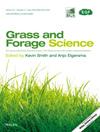Increasing Nitrogen Deposition Promotes Recruitment of Beneficial Rhizosphere Microbes to Help Grass Species Dominate Plant Community of Alpine Meadow on Qinghai-Tibetan Plateau
Abstract
Leymus secalinus has increasingly dominated the plant community of the alpine meadows on the Qinghai-Tibetan Plateau (QTP) under increasing nitrogen (N) deposition, while the rhizosphere microbial mechanisms driving this shift remain unclear. This study aimed to elucidate how N deposition alters rhizosphere microbial communities of L. secalinus and how these changes underpin its competitive advantage, thereby advancing understanding of plant-microbe interactions in nitrogen-enriched alpine ecosystems. We conducted a field experiment with simulated N deposition gradients (0, 8, 40, 72 kg N ha−1 year−1) and employed high-throughput sequencing to analyse microbial community composition and functional potential in both rhizosphere and bulk soils of L. secalinus. Root morphological and physiological traits were also measured to assess plant responses. The results indicated that increasing N deposition facilitated the apparent recruitment of bacteria associated with nutrient absorption enhancement including Sphingomonas and Bacillus, and fungi linked to plant growth promotion and disease suppression such as Mortierella, resulting in positive changes in the root traits of L. secalinus. The selective recruitment shifted the overall functionality of the rhizosphere microbes towards plant growth promoting (PGP)/plant growth promoting rhizobacteria (PGPR) under the influence of N deposition, the recruitment of beneficial microbes in the rhizosphere of L. secalinus enhances its root nutrient absorption and transport capabilities, strengthens rhizosphere disease resistance, and positively impacts its growth. These findings enhanced our understandings about the responses of the plant-rhizosphere interfaces of the alpine meadow ecosystems to increasing N deposition on the QTP, offering insights for the adaptive management of alpine meadow ecosystems amidst escalating environmental challenges.

 求助内容:
求助内容: 应助结果提醒方式:
应助结果提醒方式:


